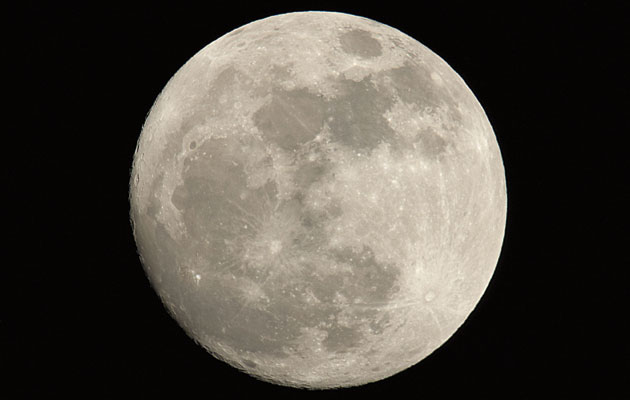As we witness the closest approach of the moon to earth in decades, Jonty Pearce wonders whether it could explain some strange behaviour...
The moon looked super on Monday night – a massive great luminous Edam Cheese floating in the sky, larger than I ever remember. Why? Because it is a Supermoon, and said to be the largest and brightest moon for the last 70 years. Not since 1948 has the moon been as close to Earth, making it up to 15 per cent larger and 30 per cent brighter than usual as its orbit swings as near to Earth as it ever gets. The effect is magnified when the moon is low in the horizon, and is best viewed looking South in areas with low light pollution.
They don’t happen often; previous Supermoon years were 1955, 1974, 1992 and 2005. To be defined as ‘Super’ the full or new moon has to approach within 226,000 miles of the Earth. This usually happens only once in 14 months; 2017 will be a year with no Supermoon. In fact as the moon gradually drifts away from the Earth at an annual rate of 1.5 inches, future Supermoons will become smaller and less impressive, though this will not appear significant in our lifetimes.
Have no fear of extreme tides. Although the moon exerts more gravitational force on our oceans than the sun, the increased influence of a Supermoon only makes a few inches difference to the tidal heights; last year’s Syzygy event with close alignment of the Sun, Earth, and Moon which resulted in Avonmouth’s tidal range reaching a massive 14m will not be repeated. Our boats are safe.
Media speculation that natural disasters are linked with Supermoons abound. The Tōhoku earthquake and tsunami of 2011, the Indian Ocean earthquake and tsunami of 2004, and the November 7.5 magnitude earthquake centred near Culverden, New Zealand all occurred in the one- or two-week period surrounding a Supermoon, though no evidence has been found of correlation between these lunar events and significant earthquakes.
While Supermoons may not be connected to earthquakes, any full moon is reputed to trigger aberrant behaviour and emotional reactions. Whether these are exacerbated by bigger moons is not recorded. NHS staff dread full moons – the impression is of a spike in admissions, and A&E staff feel that they are more over-run than usual when the moon is full. Even the police forces think that there is a rise in crime at such times. Some evidence does exist to support these feelings; a study published in the World Journal of Surgery in 2011 found that more than 40 per cent of medical staff believed lunar phases had an impact on human behaviour and, in 2007, Sussex Police announced that they would put extra officers on patrol on nights when the moon was full, following research that showed ‘a correlation between violent incidents and full moons.’
So if, as you gaze out at the brightly-lit countryside illuminated by the greatest full moon until 2034, you feel the hairs rising on the nape of your neck and suffer an increasing temptation to harm either yourself or others, commit a crime, or act in strange ways, resist. The moon will soon start to wane, and with it, hopefully, life will return to normal.




